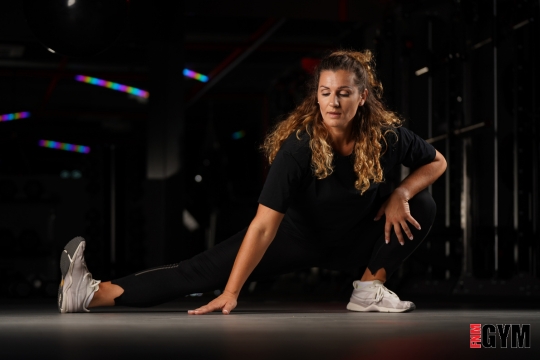Achieving fitness goals starts with a balanced workout routine, which ensures you get the most out of every session while maintaining overall health and wellness. Additionally, a well-rounded routine helps you target different muscle groups and prevent injuries. Consequently, this approach not only enhances your performance but also supports long-term fitness success.
The Importance of Balance in Workouts
Balance in your workout routine is crucial for achieving optimal results without overstraining your body. At FNM, we believe that a balanced approach helps you build strength, enhance endurance, and improve flexibility. A well-rounded fitness program prevents boredom, reduces the risk of injury, and promotes consistent progress.
Why Balance Matters
When your workouts are balanced, you ensure that all aspects of your fitness are addressed. In contrast, focusing too much on one type of exercise can lead to imbalances and potential injuries. For instance, solely focusing on cardio might improve endurance but neglect muscle strength. Likewise, excessive weight training without incorporating flexibility exercises can reduce your range of motion. Consequently, a balanced approach helps you achieve comprehensive fitness and minimize the risk of injury.
Components of a Balanced Routine
A well-balanced workout routine should include four key components: cardio, strength training, flexibility exercises, and rest. Let’s break down each component to understand their significance.
Cardio
Cardio exercises, such as running, cycling, or swimming, are essential for improving heart health and boosting endurance. In addition to these benefits, aim for at least 150 minutes of moderate-intensity or 75 minutes of high-intensity cardio each week. Moreover, incorporating cardio into your routine helps in burning calories, reducing body fat, and enhancing overall cardiovascular health. Consequently, regular cardio exercise contributes significantly to a well-rounded fitness plan.
Strength Training
Strength training is vital for building and maintaining muscle mass, which boosts metabolism and improves body composition. To achieve these benefits, incorporate exercises like weightlifting, resistance band workouts, or bodyweight exercises at least two to three times a week. Additionally, ensure you target all major muscle groups, including legs, back, chest, and arms, for a well-rounded approach. By doing so, you create a balanced routine that enhances overall strength and contributes to long-term fitness goals.
Flexibility
Flexibility exercises, such as yoga or stretching routines, improve your range of motion and reduce the risk of injury. Therefore, dedicate time after your workouts or on rest days to stretch your muscles. Additionally, this practice aids in muscle recovery and reduces soreness, which helps keep you agile and ready for your next workout. Consequently, incorporating flexibility exercises into your routine ensures you maintain overall mobility and enhance your fitness progress.
Rest and Recovery
Rest is as important as active workout days. In fact, your body needs time to recover, repair, and grow stronger. Therefore, incorporate at least one to two rest days per week into your routine. Additionally, active recovery, such as light walking or stretching, can also be beneficial on these rest days. Consequently, this balanced approach helps prevent overtraining and ensures that you continue to progress and maintain overall fitness.
Example of a Balanced Weekly Workout Plan
Creating a balanced workout routine can seem daunting; however, here’s an example of a weekly plan to guide you. By doing so, you ensure a well-rounded approach to fitness. Remember, the key is to mix up different types of exercises and allow time for rest and recovery. Consequently, this balanced strategy helps you achieve comprehensive fitness and sustain long-term progress.
Weekly Workout Plan
- Monday:
- Cardio: 30 minutes of running or brisk walking
- Strength Training: Upper body workout (chest, back, arms)
- Tuesday:
- Cardio: 20 minutes of cycling or swimming
- Flexibility: 20 minutes of yoga or stretching
- Wednesday:
- Strength Training: Lower body workout (legs, glutes)
- Core exercises (planks, crunches)
- Thursday:
- Cardio: 30 minutes of high-intensity interval training (HIIT)
- Flexibility: 15 minutes of stretching
- Friday:
- Strength Training: Full body workout with a focus on compound movements
- Saturday:
- Cardio: 45 minutes of moderate-intensity cardio (jogging, dancing)
- Flexibility: 20 minutes of yoga
- Sunday:
- Rest or light activity: Gentle walk or stretching
Adjusting the Plan Based on Goals and Fitness Levels
Your fitness goals and current fitness level should dictate the specifics of your workout routine. Here’s how to adjust the plan to suit different needs:
Beginners
If you’re new to fitness, start with shorter durations and lower intensity. Gradually increase your workout time and intensity as your fitness improves. Focus on learning proper techniques to avoid injuries.
Weight Loss
For those aiming to lose weight, incorporate more cardio to burn calories. Combine this with strength training to build muscle, which helps increase metabolism.
Muscle Gain
If your goal is to gain muscle, prioritize strength training with heavier weights and lower repetitions. Ensure you’re consuming enough protein and calories to support muscle growth.
General Fitness
For overall fitness, a balanced mix of cardio, strength, and flexibility exercises is key. By incorporating these elements into your routine, you ensure that you stay fit, healthy, and active in all aspects of life. Additionally, this comprehensive approach helps you achieve well-rounded physical health and enhances your overall quality of life.
Expert Tips and Advice
Listen to Your Body
Your body knows best. If you feel overly fatigued or experience pain, it’s a sign to rest or modify your workout. Although consistency is important, it’s equally crucial to be attuned to your body’s needs. Therefore, listening to your body helps prevent overtraining and ensures that you maintain a healthy, effective fitness routine.
Stay Hydrated and Eat Well
Proper hydration and nutrition are fundamental to any fitness routine. Drink plenty of water, and eat a balanced diet rich in fruits, vegetables, lean proteins, and whole grains.
Seek Professional Guidance
Don’t hesitate to seek advice from fitness professionals, like our friendly team at FNM. They can help tailor a workout plan specific to your goals and needs.
Creating a balanced workout routine is your ticket to a healthier, fitter, and happier you. At Fitness n Motion Health Centre, we’re here to support your fitness journey every step of the way. Let’s move towards your goals together, embracing balance and enjoying the process!
Click her to discover Research Revealing Why We Can’t Afford To Cut Cardio.




